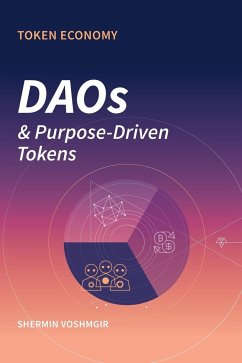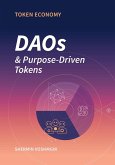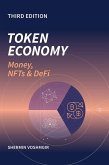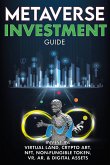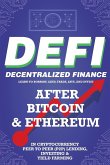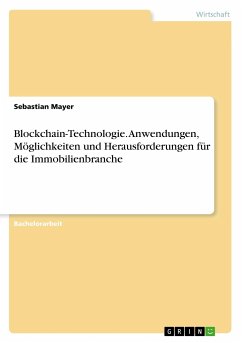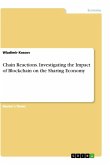This third edition of Token Economy is published as a series of three books: "Money, NFTs & DeFi," "DAOs & Purpose-Driven Tokens," and "Web3 Infrastructure." The purpose of this book - DAOs & Purpose-Driven Tokens - is to explain the institutional impact of blockchain networks and tokenization - both from a theoretical and a practical perspective - with the goal of providing a common understanding of the concept and practice of Web3-based institutions. The history of money and finance, and the impact of Web3 and tokenization on money, real-world assets and financial markets are discussed in the book "Money, NFTs & DeFi." The technical and political aspects of blockchain networks and core Web3 infrastructure will be discussed in the book "Web3 Infrastructure." The book critically reflects the concept of DAOs, starting with its first real-world example - the Bitcoin network - and how the groundbreaking cryptoeconomic mechanism behind Proof-of-Work paved the way for a novel type of organization that is steered by purpose-driven tokens and relies on "trust by math" rather than "trust by legal contract." The first two chapters of this book will explain the concept of Web3-based decentralized organizations - its origins and impact from various perspectives: history, cybernetics, organizational science, political science, economics and complex systems. Since there is no one-size-fits-all solution for the design of DAOs, theory alone will not do justice to the complex nature of this topic. Any meaningful organizational design, including that of the purpose-driven tokens which steer Web3-based institutions, will always depend on the purpose and political principles of said organization/network/Internet community/cooperative. To provide a more tangible approach to the best practices and pitfalls of DAOs, a range of DAO use cases will be analyzed based on a DAO design thinking framework, which was developed specifically for this book. Best practices for designing DAOs and the purpose-driven tokens that steer them are still underdeveloped. Many early use cases lack a sustainable token design to achieve their self-declared purpose, which is why a wide range of purposes were selected to display different purposes a DAO can achieve or aim to achieve, even though some of the use cases selected have considerable design flaws. While all use cases have compelling value propositions, and in some cases even considerable traction, they sometimes display unintended design flaws that contradict the purpose and political principles upon which they were designed. The use cases selected are: P2P money & payment network (Bitcoin), P2P stable token (DAI & MarkerDAO), P2P social networks such as Steemit.com or friends.tech, P2P Telco Network (Helium), P2P Data Exchange (Ocean Protocol), and biodiversity tokens (Rebalance Earth). Except for Rebalance Earth, all use cases have a long track record of protocol evolution. They provide historical data to correlate token design choices to their effects, i.e. power structures that emerged over time, and the long-term success of the protocol/network/organization in question. The analysis of the use cases in the second part of the book is mostly qualitative. Additional quantitative analysis could be carried out as well, but that is not the purpose of this book. Quantitative analysis only makes sense once one understands what needs to be analyzed, and in which context the data should be interpreted. A metric such as a "market cap" or "gross network value" of a token is not significant on its own, if one does not first consider the purpose of the token design, the industry in which the DAO operates, the stakeholder structure, and many other qualitative aspects relevant to different types of DAOs.
Hinweis: Dieser Artikel kann nur an eine deutsche Lieferadresse ausgeliefert werden.
Hinweis: Dieser Artikel kann nur an eine deutsche Lieferadresse ausgeliefert werden.

